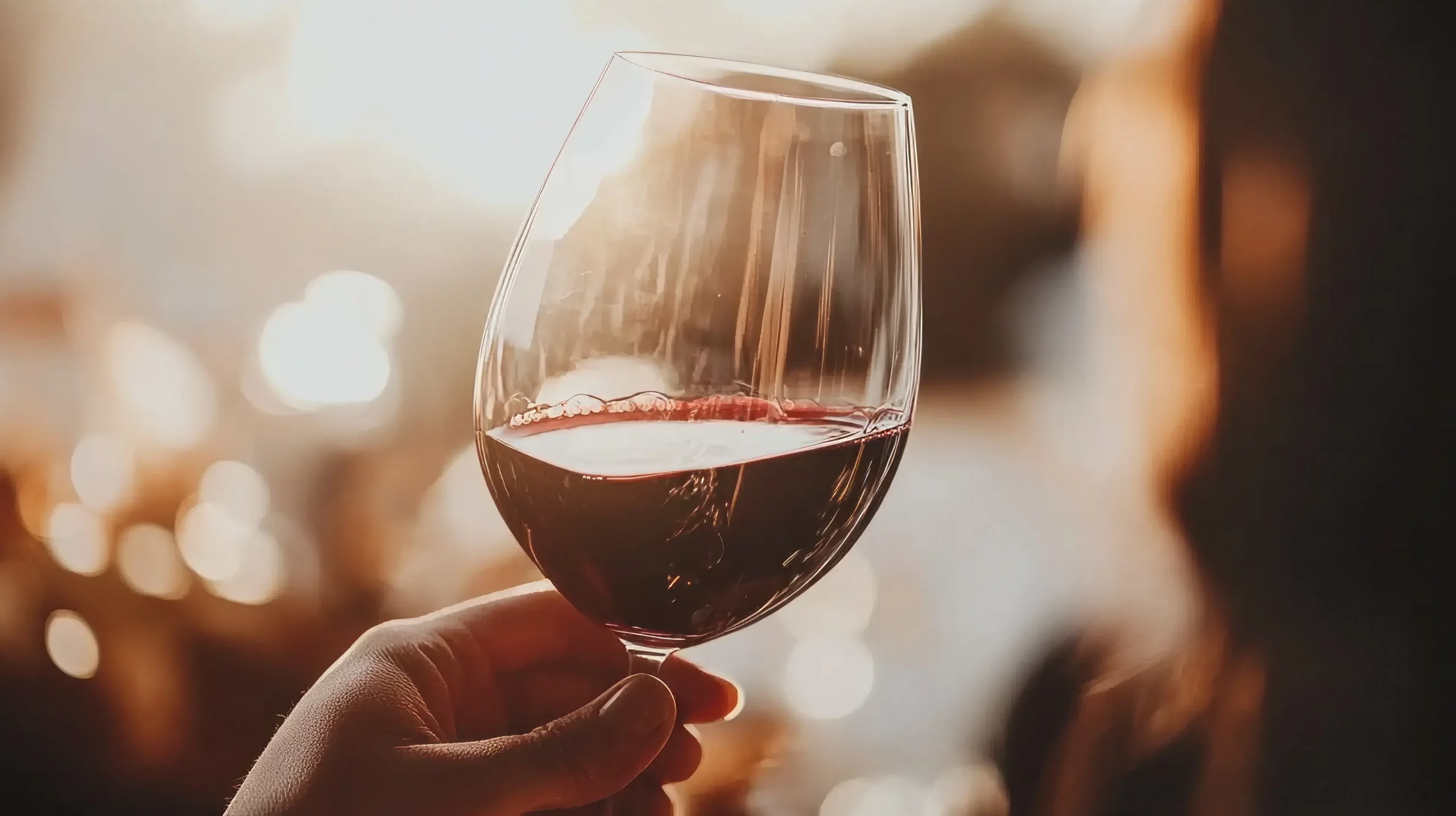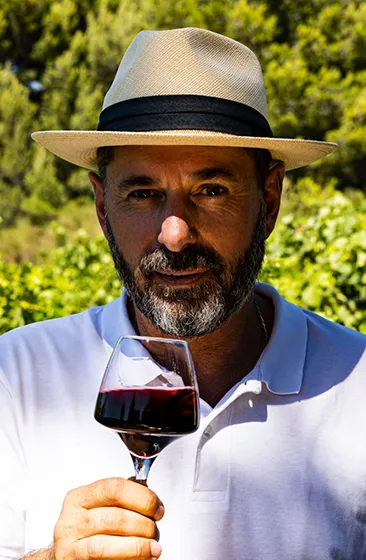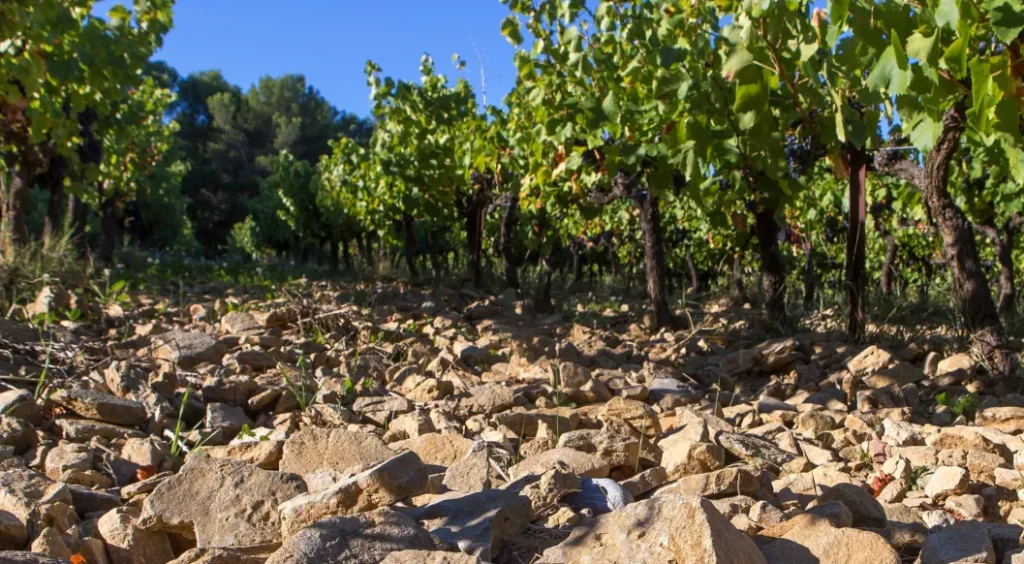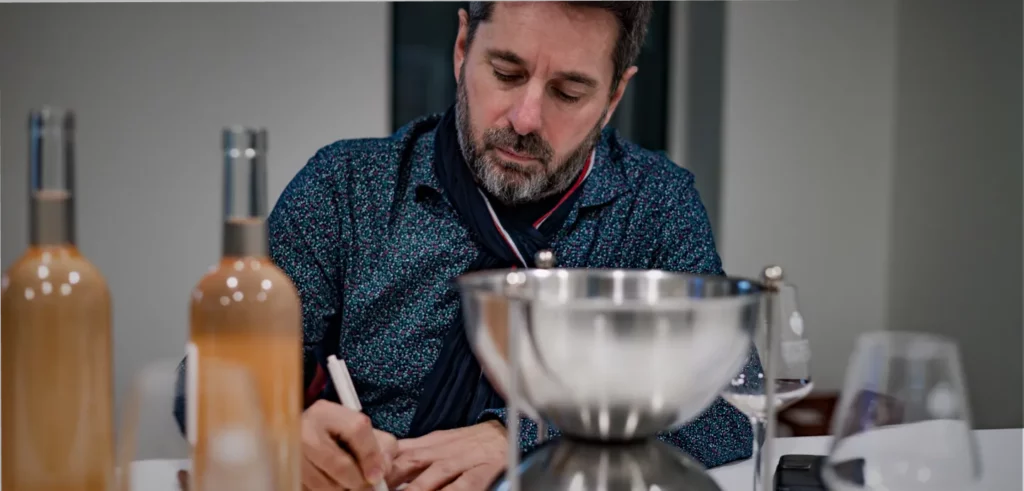Tasting wine, whether you’re at home dining with friends or in a professional setting, is always a mix of enjoyment and discovery. But why is it that some wines feel brighter and more expressive when served by a professional rather than in a home setting? The answer usually lies in a small set of tricks that sommeliers and wine amateurs hone to help each bottle reveal itself in all its glory.
The good news? You don’t need to overthink it. A few simple tricks can take your tasting from pleasant enough to genuinely memorable. Temperature, order of service, glass choice, room fragrance, even how you let the wine breathe… All these little touches make a big difference! So, ready to elevate your tasting experience? Here are our five tips to make your next tasting unforgettable.
Tip n° 1: Serve the wine at its ideal temperature
If there’s one detail that can transform a wine tasting, it’s temperature. A red poured too warm will quickly feel heavy, the alcohol dominating everything else, while a white served straight from the fridge will shut down and lose the finesse you were hoping for. The wine itself hasn’t changed, but the way it comes across in the glass is completely different.
Thankfully, finding the right temperature for each wine does not require extensive knowledge, but some well-rounded pointers: For Rhône Valley wines, for example, as is the case for many structured red wines, you can serve them around 14 to 15°C. Crisp white wines will benefit from cooler temperatures, around 10 to 12°C, while sweet wines should be poured even more chilled. These aren’t rigid rules, but they’re solid guidelines that you can follow to allow the wine to express all the richness of its character. If you’re unsure about the ideal temperature, however, just follow the expert’s guidelines: the winemaker! At Xavier Vignon, every technical sheet on our website gives you the ideal serving temperature for each wine, as well as its ageing potential, so you know exactly how to enjoy it now or later.
Our advice: For a quick trick that works every time: bring your reds out of the cellar about half an hour before serving, and take your whites out of the fridge ten minutes before you pour them. With that simple move, you’ll already be tasting the wine on its best terms.
Tip n° 2: Follow an order of service.
The sequence in which you taste wines matters far more than most people realise. Pouring a bold, structured red wine before a crisp, delicate white one is a guaranteed way to overwhelm your palate, leaving the lighter wine struggling to make itself heard.
To let every bottle express the very best of its capabilities, think about a progression in the tasting order rather than pouring at random. Start with sparkling wines, which wake up the senses, before moving on to bright, dry whites, then gradually to richer whites with more weight. From there, lighter reds should come first, followed by fuller-bodied reds, and finally sweet or dessert wines, which naturally belong at the end. This isn’t a rule that only applies in professional tastings. Even when you’re hosting friends at home, it’s worth taking a moment before the evening begins to decide in what order you’ll serve your bottles. Not only will your guests appreciate each wine more fully, but the whole experience will feel smoother and more intentional.
Tip n° 3: Choose the right glassware
It’s tempting to pour every wine into the same glass, whether at the dinner table or during a tasting with friends. But the truth is, the shape and size of the glass genuinely affect how you experience both the aromas and structure of a wine. A bowl that’s too narrow traps them, while one that’s too wide lets them scatter and fade.
Most professional sommeliers and wine amateurs will prefer a fine tulip-shaped glass, slightly narrowed at the rim, which helps the nose detect concentrated aromas. However, there is no perfect, universal glass that will suit every type of wine, which is why it can be fun to try out different shapes and sizes! A robust red like a Châteauneuf-du-Pape, for example, will express itself fully in a broader glass compared to a Syrah, which finesse will enjoy a smaller bowl to sharpen its aromatic profile. Meanwhile, white wines are at their most expressive in glasses that are a touch smaller, which brings out their freshness and subtle layers. Glassware will never replace what’s inside the bottle, but the right shape often makes the difference between a wine that feels flat and one that suddenly lights up the palate.
Our advice: if you don’t have a cupboard full of glassware, pick a medium-sized tulip-shaped glass with a rim that narrows slightly at the top. It will do justice to both reds and whites without too much fuss.
Tip n° 4: Keep other scents in check
In wine tasting, the nose does most of the heavy lifting. Long before the palate gets involved, it’s your sense of smell that reveals the wine’s layers and hints at what’s to come, which is why any competing aroma is a real distraction. Strong perfume, the smell of food drifting in from the kitchen, scented candles, or even tobacco smoke can easily overpower what’s in the glass.
Every so often, the problem comes from the glass itself. If it has been stored for too long in damp cardboard or washed with a detergent that leaves a fragrance, it may carry lingering smells that interfere with the wine. The simplest way to avoid all this is to create a clean, neutral environment. Use glasses that have been washed and rinsed in clear water, and keep the space around you free of competing scents. It may seem like a small detail, but once the air is clear, the wine reveals itself with far greater precision and purity.
Tip n° 5: Let the wine breathe
Few questions come up as often as whether or not to decant a wine. The truth is, it entirely depends on the style of the wine! A young, structured red, such as a taut Syrah or a tightly wound Châteauneuf-du-Pape, will significantly benefit from some time in a decanter, as it softens the tannins, allowing the aromas to unfold. On the other hand, a more mature or delicate wine can tire quickly if left exposed for too long.
Older wines can also profit from a touch of air, but the manipulation demands much greater care. In that case, the goal is not so much aeration as decanting. The idea is to separate the wine from its sediment and wake it up gently just before serving. Leave it too long, and the wine may lose its freshness and collapse in a matter of minutes. That is why we always advise a straightforward approach: give young, powerful wines several hours in a decanter, if possible, and handle older bottles delicately, decanting them only at the very last moment.
Our advice: Pour yourself a small glass first and watch how the wine evolves in contact with the air. You will quickly see whether it will benefit from a long stretch in the decanter or whether it is best enjoyed right away.
The art of unlocking a wine’s full potential
Wine tasting should not be about strict rituals or complicated techniques, but rather finding ways to enjoy each wine to its full potential, which is why some minor details, such as the correct temperature of service, pouring in the proper glass or in a particular order can help you make the most of these bottles and transform even a simple dinner into a truly memorable wine tasting experience.
So the next time you uncork a bottle, take a moment to put these simple ideas into practice. You will be surprised by how much more vivid, expressive, and memorable the experience becomes. And if you are wondering where to start, our Rhône Valley wines are a perfect selection to put those tips into practice!
Here’s to great wines and even better tastings!



